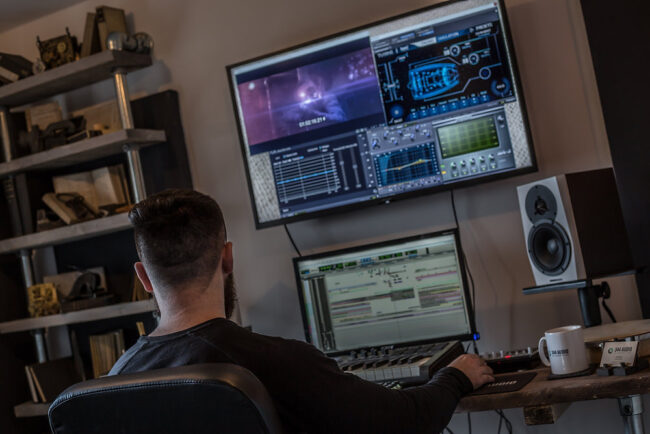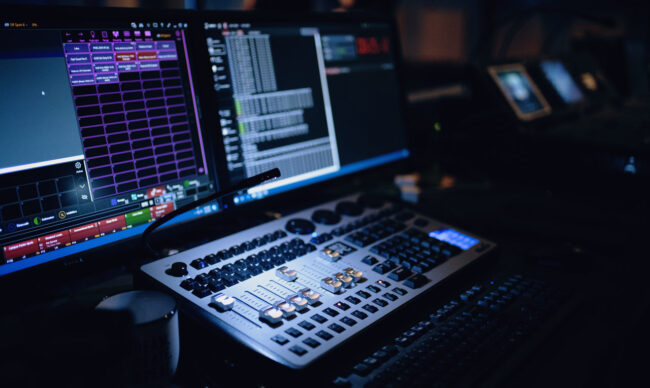When it comes to creative expression, sound design stands as a formidable pillar. After all, it shapes the auditory landscapes that accompany our visual experiences.
From the thunderous roars of cinematic battles to the subtle melodies that underscore emotional moments, sound design plays a pivotal role in evoking emotions. It is this very thought that gets many creative minds to learn audio or sound design.
As a career option, sound designing is not a bad choice. According to Payscale, a job as a sound designer in the US pays around $60,774 per year on average. That being said, entering this field can be very difficult, especially if you’re trying to learn everything by yourself.
Take the Academy of Art University’s BFA in sound design degree as an example here. According to the program webpage, this four-year program teaches students everything about sound design – from the absolute basics to advanced concepts.
Moreover, the courses are taught by academic and professional experts in the field. Therefore, self-learning this skill will, without a doubt, be very tedious.
That being said, embarking on the journey of self-learning in sound design can be an immensely rewarding endeavor.
Even if you don’t have the same skills as someone with a college degree in this field, you’ll still get to learn a lot. For that, however, you need to take the right approach to learn the art of sound design. Here’s how.
#1 Understand the Fundamentals
Just as a painter must grasp the basics of color theory, a sound designer must acquaint themselves with the foundational principles of sound.
Begin by familiarizing yourself with terms such as amplitude, frequency, wavelength, and timbre. Understanding these concepts will provide you with a solid framework upon which to build your knowledge and skills.
Also, explore the tools of the trade, including digital audio workstations (DAWs) and hardware, to gain a comprehensive understanding of the resources available. Invest in software as well, especially plugins.
You should particularly be looking for the best reverb plugins that you can afford. Reverb works great with vocals as it smears a vocal with reflections, meaning any subtle imperfection in the output sound is masked.
As told on Produce Like A Pro, reverb can be used in a lot of ways. You can use it to make something sound more exciting or give it a bit of depth. However, for it to work out perfectly, you need to experiment a lot with reverb, which is why such plugins are so important.
#2 Develop Your Listening Skills
Train your ears to discern the nuances within different sounds, whether it be the subtle variations in pitch or the spatial characteristics of reverberation.
Practice active listening by dissecting soundscapes in films, video games, and music tracks.
Pay attention to how sound designers utilize elements such as dynamics, panning, and effects to evoke specific moods and atmospheres. By honing your listening skills, you’ll gain invaluable insights that will inform your own creative endeavors.
#3 Experiment Freely

Don’t be afraid to explore unconventional techniques and push the boundaries of traditional practices.
Experiment with layering sounds, applying effects, and manipulating audio in unexpected ways. Embrace trial and error as a means of discovery, knowing that even mistakes can lead to serendipitous breakthroughs.
Whether you’re crafting otherworldly soundscapes or crafting realistic Foley effects, let your imagination run wild and allow curiosity to be your guide.
#4 Study the Works of Masters
Learning from the masters is a time-honored tradition in any creative discipline, and sound design is no exception. Immerse yourself in the work of renowned sound designers across various mediums.
Analyze their techniques, dissect their workflows, and gain insights into the thought processes behind their creations.
According to Backstage, some of the best movies with exceptional sound design and mixing include Dune, The Dark Knight, The Matrix, and Apocalypse Now.
Even if you have watched these movies, do it again, but this time, focus on the audio. Maybe this time, you can listen to these movies instead of watching them.
#5 Build a Sound Library
A well-curated sound library is the bedrock of any sound designer’s toolkit. As you embark on your journey of self-learning, begin building your own collection of sound effects, ambiances, and recordings.
Capture sounds from your surroundings using a portable recorder or explore online libraries and sample packs for a wealth of pre-recorded assets.
Organize your library systematically, using descriptive metadata to facilitate quick and efficient searching.
Having a diverse array of sounds at your fingertips will not only expedite your workflow. It will also provide you with a rich palette of sonic textures to draw upon in your projects.
#6 Seek Feedback and Collaboration

Last but not least, when it comes to self-learning a skill like sound design, never underestimate the value of feedback and collaboration.
Start by sharing your work with peers, mentors, and online communities to receive constructive critique and glean insights from their perspectives.
Alongside this, consider collaborating with filmmakers, game developers, and musicians to gain hands-on experience and expand your portfolio.
You don’t have to work with renowned or top game developers and musicians for this purpose. Upcoming professionals in these fields can also give you constructive feedback.
Embrace feedback as a catalyst for improvement, remaining open-minded and receptive to new ideas and perspectives.
Remember that the journey of self-learning is not a solitary endeavor but rather a collective effort fueled by shared knowledge and collaboration.
If you’re not good at receiving criticism or feedback, you can never improve on your sound design skills. At the end of the day, the sounds you create will not always be for your own pleasure. They will mostly be for an audience, so being receptive to feedback is vital here if you want to cater to your potential audience.
Conclusion

In conclusion, embarking on the path of self-learning in sound design is a journey ripe with opportunities for exploration, experimentation, and growth.
By sticking to these tips, you can pave the way for a fulfilling and rewarding journey in this dynamic and ever-evolving field. Let your creativity soar, and may the symphony of sounds you craft resonate with audiences far and wide.
